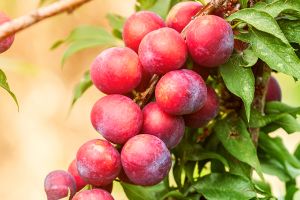Can Cat Eat plum?

Also known as:
similar plants: apricotpeachcherryPrunus domestica
The flesh is safe, but the pit, stem, and leaves are toxic as they contain cyanide.
CautionFruit

Use Caution
This food should be given with caution and in very small amounts, if at all.
Similar to peaches and cherries, the pit of the plum contains cyanogenic glycosides which can be released if chewed. The pit itself is also a choking and intestinal obstruction hazard.
Detailed Information
Similar to peaches and cherries, the pit of the plum contains cyanogenic glycosides which can be released if chewed. The pit itself is also a choking and intestinal obstruction hazard.
Potential Risks
- Toxic to cats
- Choking hazard
- Risk of intestinal obstruction
Recommendations
It is safest to avoid plums entirely to prevent the risk of cyanide poisoning or intestinal blockage.
Veterinary Advice
Consult with your veterinarian before introducing this food to your cat.
Quick Facts
Safety LevelCaution
CategoryFruit
Last Updated7/24/2025
Sources
- ASPCA Animal Poison Control Center
- Veterinary Nutritionist Guidelines
- Pet Food Safety Research